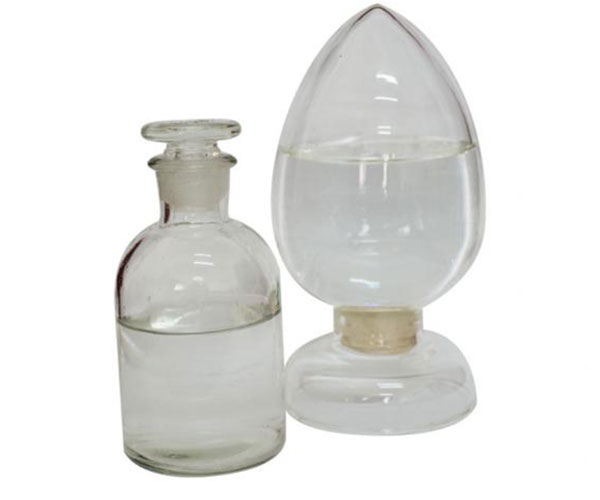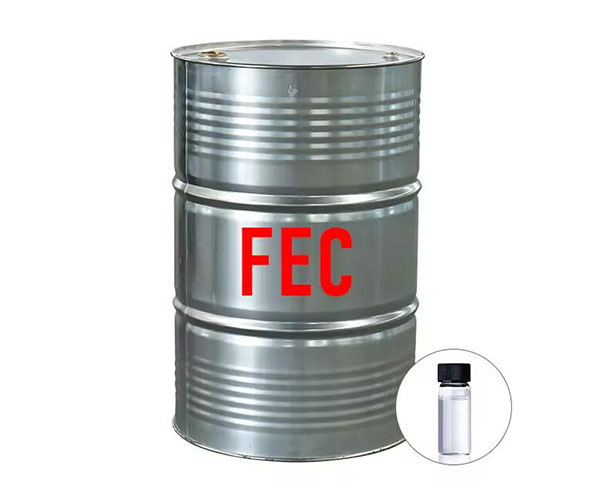Fluoroethylene carbonate (FEC)


Fluoroethylene carbonate (FEC)
Fluoroethylene carbonate (FEC) is an additive for lithium battery electrolyte that meets relevant application standards. It is mainly used in the development of high-rate power lithium-ion batteries to improve the safety and rate of the battery. It can be used as an intermediate for medicines and pesticides at room temperature. In terms of the industrial chain, the downstream of Fluoroethylene carbonate electrolyte is mainly used in lithium iron phosphate batteries, ternary lithium batteries, lithium cobalt oxide batteries, lithium manganese oxide batteries, etc.
- CAS NO.: 114435-02-8
- HS Code:2932999099
- EINECS No.: 483-360-5
- Molecular Formula:C3H3FO3
- Molecular Weight: 106.05
- Appearance:Colourless liquid
Specific Applications of Fluoroethylene carbonate (FEC)
High-rate power lithium-ion batteries. Fluoroethylene carbonate is the core additive for the development of high-rate power lithium-ion battery electrolytes, which can enhance the stability of electrode materials and improve the high-rate discharge capacity and safety of batteries.
High voltage system. Due to its good oxidation resistance of the fluorinated structure, fluoroethylene carbonate is often used in high-voltage systems to further improve the performance of batteries.
Lithium-ion electrolytes of high-power lithium batteries, which can effectively improve the low-temperature resistance of lithium batteries and improve the flame retardancy of lithium batteries. FEC electrolyte has good performance in forming SEI film (solid electrolyte interface film) in lithium-ion battery electrolytes, and can form a compact structure layer without increasing impedance, thereby improving the low-temperature performance of the electrolyte. In addition, it can prevent the electrolyte from further decomposing and improve the capacity and cycle stability of the battery.
Why Use Fluoroethylene Carbonate in Electrolytes
As an important additive in lithium-ion battery electrolytes, the introduction of fluorine atoms in its molecular structure significantly changes the physical and chemical properties of the material.
In carbonate solvent systems, this compound improves the antioxidant capacity of the electrolyte by reducing the highest occupied orbital energy level of the solvent molecules, enabling it to remain stable in high-voltage systems above 4.5V. This property plays a key role in high-voltage positive electrode systems such as high-nickel ternary positive electrodes and lithium-rich manganese-based materials. It can effectively inhibit the gas production caused by the oxidation and decomposition of the electrolyte at the positive electrode interface.
In terms of negative electrode interface film formation, the reduction potential of fluoroethylene carbonate FEC is 0.3-0.5V lower than that of conventional ethylene carbonate, and it preferentially undergoes reduction decomposition on the surface of graphite negative electrode. This characteristic causes the formed solid electrolyte interface film (SEI film) to present a double-layer structure. The inner layer is composed of inorganic components such as LiF and Li2CO3, and the outer layer is rich in organic fluorides. This structure has higher mechanical strength and lower electronic conductivity, which can effectively prevent the continuous decomposition of the electrolyte and reduce the irreversible capacity loss of the first cycle by 15%-20%.
For silicon-based negative electrode systems, the elastic SEI film formed by this additive can buffer the electrode deformation with a volume expansion of up to 300%, and the capacity retention rate is increased to more than 85% after 50 cycles.
The improvement in high temperature performance comes from the fact that the thermal decomposition temperature of fluoroethylene carbonate is more than 40°C higher than that of propylene carbonate. This characteristic reduces the capacity decay rate of the battery under high temperature cycling conditions of 45°C from 2% per week to 0.5%.
The optimization of low temperature performance is reflected in the regulating effect of fluoroethylene carbonate electrolyte on the viscosity of the electrolyte. This characteristic enables the battery using this additive to maintain a discharge capacity of 75% of the normal temperature capacity at -20°C, which is 20 percentage points higher than the system without additives.
In terms of safety improvement, the flash point of FEC electrolyte is 25°C higher than that of dimethyl carbonate, and it can delay the occurrence of thermal runaway by about 300 seconds in a 150°C hot box test. The hydrogen fluoride produced by its decomposition can effectively remove trace moisture in the electrolyte, control the moisture content below 10ppm, and avoid gas production side reactions.
Contact Us
Have any need about new-energy materials? Feel free to contact us at any time.
- Phone: +86-371-55091002
- Whatsapp: +8618624832876
- Wechat: +8618624832876
- Email: Sales@mgm-batterymaterials.com
- Address: NO.283 XISANHUAN ROAD,HIGH-TECH INDUSTRIALDEVELOPMENT ZONE,ZHENGZHOU,HENAN,CHINA.
